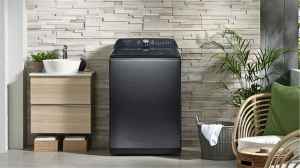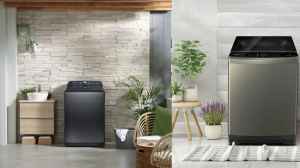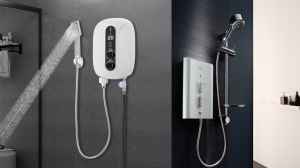A geyser, or water heater, is a non-negotiable appliance for comfort, especially during colder months. However, choosing the right model from the sheer number of options—storage vs. instant, electric vs. gas, and varying capacities—can be overwhelming. The wrong choice can lead to high electricity bills, insufficient hot water supply, or a short product lifespan, particularly in areas with hard water or high water pressure.
This comprehensive buying guide is designed to cut through the confusion. We've analysed the top 10 geysers across different categories and compiled all the essential criteria—from tank capacity and safety features to energy efficiency ratings—to help you make an informed decision. Our goal is to provide you with a definitive resource that ensures you invest in a reliable, cost-effective, and safe water heating solution that perfectly matches your household needs.
10 Best Geysers and Water Heaters for Home Use
Here is a detailed review of the top water heaters currently available on Amazon, covering options for small, medium, and large families, as well as high-rise and hard-water environments.
Loading...
Detailed Comparison of the Top 10 Geysers
Geyser Buying Guide: How to Pick the Right Water Heater
Choosing the best geyser depends entirely on your specific household needs, which can be broken down into a few key considerations based on family size and usage patterns.
Understanding Geyser Technology: Types and Comparison
Geysers are primarily categorised by their energy source and how they store water, each offering distinct advantages.
Essential Factors to Consider Before Buying The Best Geyser For Home
Making the right choice goes beyond just looking at the price tag. These factors determine long-term performance, safety, and operational costs:
BEE Star Rating and Energy Efficiency: The Bureau of Energy Efficiency (BEE) rating indicates how energy efficient the geyser is. A 5-Star rating is the best choice, especially for storage models, as the higher initial cost is quickly offset by substantial savings on your electricity bill over the appliance's lifespan.
Pressure Rating (Bar): High-rise buildings or homes using pressure pumps need geysers with a high-pressure tolerance. Look for a rating of 8 Bar or higher. A standard geyser (4 Bar) can burst under high pressure.
Tank Material and Coating: This is crucial for hard water areas.
- Glass-Lined/Vitreous Enamel: Excellent corrosion resistance, ideal for hard water. (e.g., AO Smith Blue Diamond, Havells Feroglas).
- Stainless Steel: Used mainly in instant geysers; good for small volumes but less durable against corrosion over long periods than high-quality glass-lined tanks.
Heating Element: Copper elements heat faster but may scale up in hard water. Incoloy or Glass-Coated Incoloy elements offer higher resistance to carbonisation and scaling, extending the geyser's life in tough water conditions.
Installation and Service: Check if the brand offers Free Installation and reliable after-sales service in your area. Complex installations (like gas geysers) require professional setup for safety.
Warranty Details: Look for separate warranties: Tank (usually 5-7 years) and Heating Element/Product (usually 2 years). A longer tank warranty signals confidence in the product's longevity.
Precautionary Steps For Safe Geyser Usage
Safety is paramount, especially since water heaters combine water, electricity, and high temperatures. Following these steps ensures safe and efficient operation:
- Mandatory Earthing Check: Ensure your bathroom wiring has proper and reliable earthing. A shock-proof feature only works effectively when the home's electrical grounding is sound.
- Professional Installation: Always use the manufacturer-recommended technician for installation. They ensure correct plumbing, proper connection of the Multi-Function Valve (MFV), and adequate wall mounting.
- Ensure Proper Ventilation (Gas Geysers): Gas geysers produce Carbon Monoxide (CO). They must be installed in a well-ventilated area, preferably outside the main bathroom, to prevent CO poisoning.
- Do Not Block the Pressure Release Valve (PRV): The PRV is a critical safety feature that releases excessive pressure. Never cover it or tamper with its outlet. It is normal for this valve to drip occasionally.
- Routine Maintenance: For hard water areas, schedule periodic servicing to clean the heating element and check the condition of the sacrificial anode rod (if present). Replace the anode rod if depleted to maintain tank integrity.
- Use the Thermostat: Set the temperature to a reasonable level (e.g., 50°C to 60°C). Setting it too high wastes energy and increases the risk of scalding.
Read More: 5 Best AO Smith 15 Litre Geysers
Disclaimer: At HerZindagi, we prioritize providing the up-to-date information on the latest trending commodities and goods. This Article is written and vetted by our in-house category authors in sync with the Google guidelines on product reviews and shoppable content. HerZindagi is in an associate partnership, so we may earn a part of the revenue when you make a purchase. We shall not be liable for any claim under applicable laws, including but not limited to the Consumer Protection Act, 2019, concerning the products. The products listed in this article are in no particular order of priority.
Loading...



